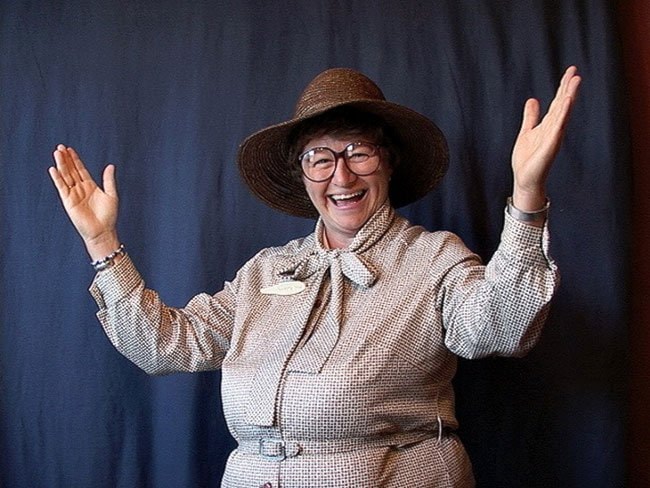Sue Schaefer won’t be serving dessert when she visits the Yukon this coming week, but she still hopes people walk away from her presentation with a smile.
It’s a fairly tall order, considering she’s telling audiences about a disease that affects 21 per cent of Yukoners over 64 years old, and over 9 million Canadians.
Schaefer will bring her one-woman-show, Mrs. Pudding, to Whitehorse on Sept. 24 and to Haines Junction on Sept. 25. Her monologue follows the journey of a middle-aged woman living with Type 2 diabetes. It chronicles her initial shock and denial following the diagnosis, the emotional impacts of the disease and the program she develops to manage it.
Schaefer, a diabetes nurse and educator for over 20 years, has been performing as Mrs. Pudding since 1998. She wants her audiences to be able to laugh about diabetes.
That’s important when teaching people about a disease with serious physical, financial and social impacts, she said.
Diabetes is a form of heart disease, she said. The body does not produce any or enough insulin, the hormone that regulates blood-sugar levels. This can lead to heart attacks, stroke, circulatory problems, nerve damage, blindness and kidney failure, among other things.
By 2016, it will cost approximately $6 million to treat the disease in the Yukon, according to the Strategic Report on Diabetes in the Yukon. The disease is prevalent across the North and rates in aboriginal communities are three to five times higher than national averages, said Boyanne Young, the northern region branch co-ordinator for the Canadian Diabetes Association, which is one of the organizers of the event.
People of South-Asian and Chinese communities also have a high risk for the disease, she said.
Living with diabetes raises different social challenges. Schaefer was diagnosed with Type 1 diabetes when she was in her late-20s.
That means her pancreas had stopped producing insulin. Once diagnosed, individuals need to inject themselves with the hormone multiple times a day to balance their blood-sugar levels. Only 10 per cent of diabetics have Type 1. Normally, people develop this form of the disease in childhood.
In Type 2 diabetes, the pancreas still produces insulin, just not enough to meet their body’s needs. While many people with Type 2 diabetes will eventually need to take insulin, it can be managed through diet and exercise, said Schaefer.
Her diagnosis brought her relief, she said. She had been feeling unusually tired and was glad there was an explanation and that her life wouldn’t always just be full of working and sleeping, she said.
Her first shot of insulin was like “a miracle drug,” said Schaefer.
But that doesn’t make living with the disease easy. There’s a lot of judgment around diabetes, she said.
“You treat diabetes through changes in lifestyle. And so people then look at that and say things like, ‘Well, obviously if this person had eaten properly or exercised more or maintained a good body weight, this never would have happened in the first place.’”
But it’s not that simple, said Schaefer.
Uncontrollable factors, like genetics, can also contribute to someone being diagnosed. And calling people “bad” diabetics or “cheaters” doesn’t help either.
“With somebody who has diabetes, the expectation is that they’re going to eat healthy - not for a couple of months - they’re actually going to have to eat healthy for the rest of their lives. That’s a tall order.”
Even if people don’t have the disease themselves, they should still be concerned, she said. Rising rates of the disease worldwide reflect troubling social changes, she said.
People have gotten away from eating healthy food, and sometimes consider regular exercise abnormal, she said. In her presentations, she urges her audiences to adhere to healthy eating and active living.
Community support also helps. The best thing people can do to help someone who has recently been diagnosed is listen, she said. Once someone’s diagnosed, they become a “lifer” with the disease, said Schaefer.
“It is a daily grind. I have to do something with my diabetes every single day, every single meal,” she said.
Schaefer will be presenting at the Whitehorse Public Library at 7 p.m. on Monday. She will be in Haines Junction on Tuesday. Champagne and Aishihik First Nations are one of the organizers of that event.
Contact Meagan Gillmore at
mgillmore@yukon-news.com
